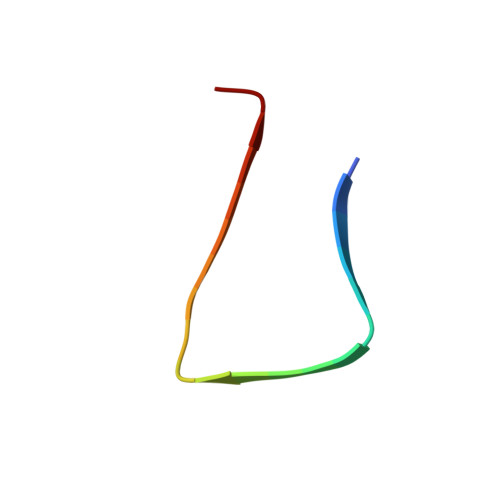Structure of biofilm-forming functional amyloid PSM alpha 1 from Staphylococcus aureus.
Hansen, K.H., Byeon, C.H., Liu, Q., Drace, T., Boesen, T., Conway, J.F., Andreasen, M., Akbey, U.(2024) Proc Natl Acad Sci U S A 121: e2406775121-e2406775121
- PubMed: 39116134
- DOI: https://doi.org/10.1073/pnas.2406775121
- Primary Citation of Related Structures:
9ATW - PubMed Abstract:
Biofilm-protected pathogenic Staphylococcus aureus causes chronic infections that are difficult to treat. An essential building block of these biofilms are functional amyloid fibrils that assemble from phenol-soluble modulins (PSMs). PSMα1 cross-seeds other PSMs into cross-β amyloid folds and is therefore a key element in initiating biofilm formation. However, the paucity of high-resolution structures hinders efforts to prevent amyloid assembly and biofilm formation. Here, we present a 3.5 Å resolution density map of the major PSMα1 fibril form revealing a left-handed cross-β fibril composed of two C 2 -symmetric U-shaped protofilaments whose subunits are unusually tilted out-of-plane. Monomeric α-helical PSMα1 is extremely cytotoxic to cells, despite the moderate toxicity of the cross-β fibril. We suggest mechanistic insights into the PSM functional amyloid formation and conformation transformation on the path from monomer-to-fibril formation. Details of PSMα1 assembly and fibril polymorphism suggest how S. aureus utilizes functional amyloids to form biofilms and establish a framework for developing therapeutics against infection and antimicrobial resistance.
Organizational Affiliation:
Department of Structural Biology, School of Medicine, University of Pittsburgh, Pittsburgh, PA 15261.














